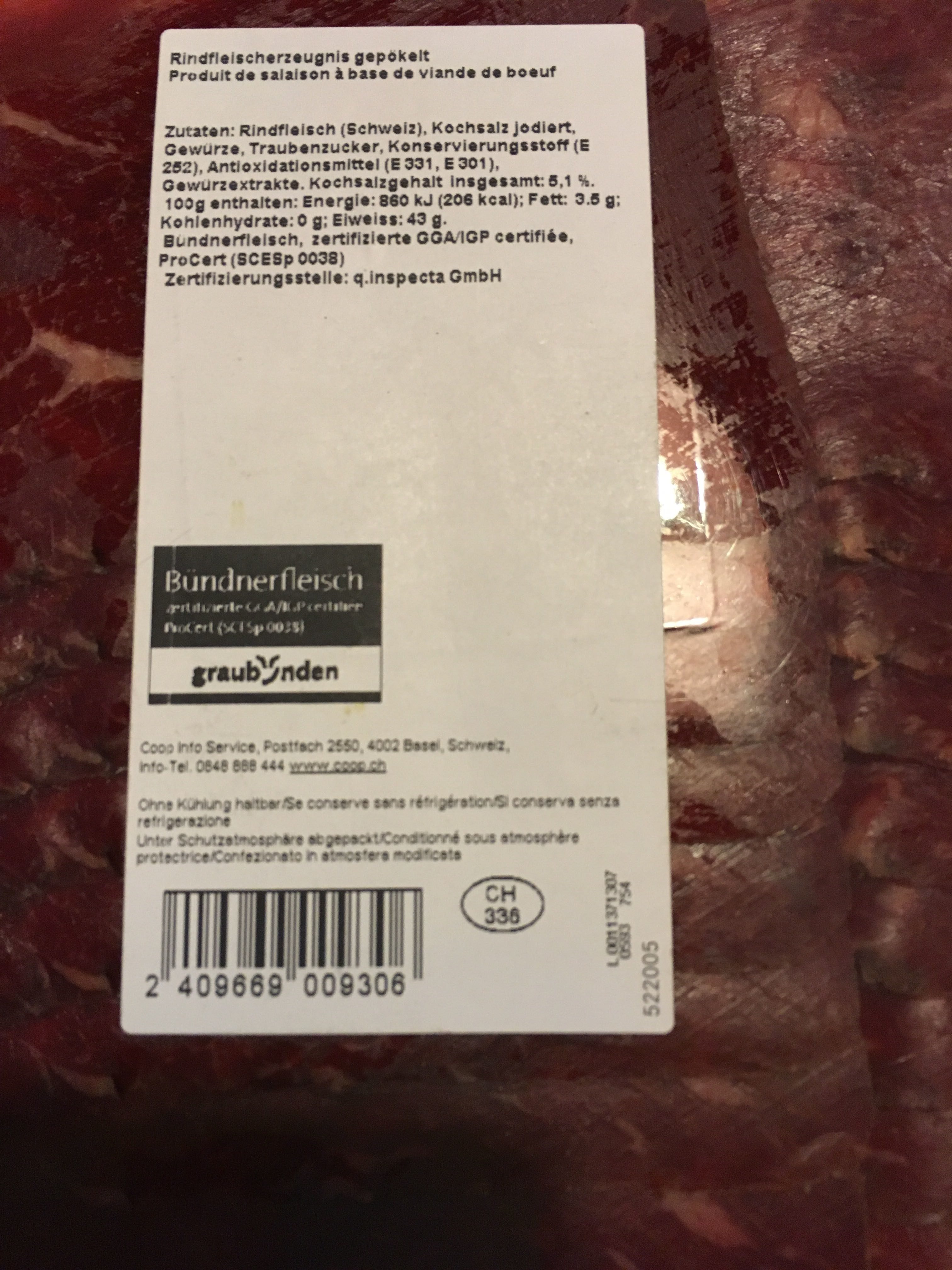Rindfleischerzeugnis gepökelt - Bündnerfleisch
This product page is not complete. You can help to complete it by editing it and adding more data from the photos we have, or by taking more photos using the app for Android or iPhone/iPad. Thank you!
×
Barcode: 2409669009306 (EAN / EAN-13)
Common name: Rindfleischerzeugnis gepökelt
Brands: Bündnerfleisch
Categories: Meats and their products, Meats, Prepared meats, Hams, Cured hams, Dried hams
Origin of ingredients: Switzerland
Manufacturing or processing places: Switzerland
Traceability code: CH-336
Countries where sold: Switzerland
Matching with your preferences
Environment
Carbon footprint
Packaging
Transportation
Report a problem
Data sources
Product added on by openfoodfacts-contributors
Last edit of product page on by torredibabele.
If the data is incomplete or incorrect, you can complete or correct it by editing this page.









